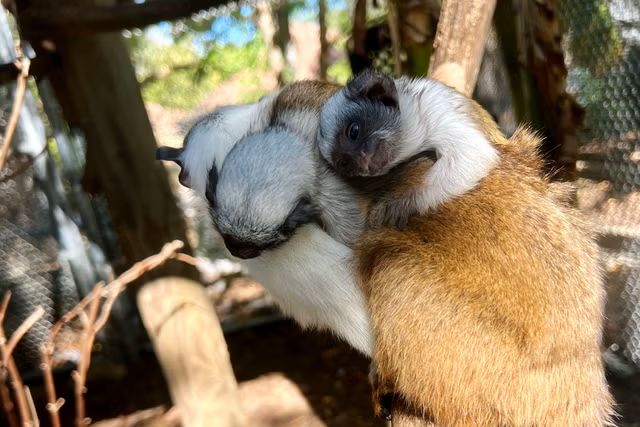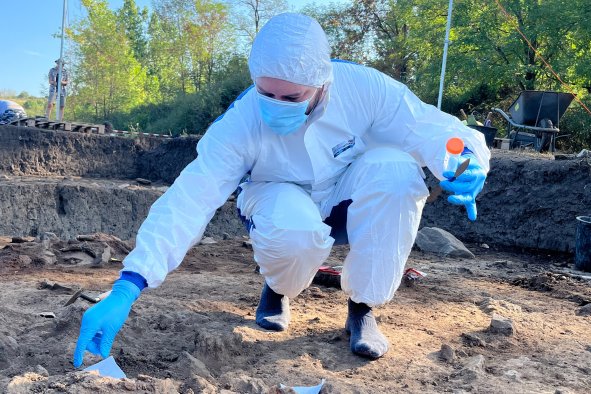Paleontologists have discovered a new prehistoric mammal species in Colorado that lived during the age of the dinosaurs and may have been a swamp-dweller.
In a study published in the journal PLOS ONE, a team of researchers described the species for the first time.
The description was based on fossils dated to about 70 million to 75 million years ago during the Late Cretaceous period that were found near Rangely in the northwest of Colorado. The known remains consist of a piece of jawbone and three molar teeth. The new species has been named Heleocola piceanus, with the first word in the name translating roughly to "swamp dweller" in Latin.
"Heleocola, which was an ancient opossum-like animal and a distant cousin to today's marsupials, is important, in part, because the time slice it comes from is not well documented in North America—and we just don't know a lot about mammals from this time," Jaelyn Eberle, lead author of the study at the University of Colorado Boulder, told Newsweek.
In the period when the creature lived, a vast inland sea called the Western Interior Seaway split North America into two landmasses, known as Laramidia (to the west) and Appalachia (to the east). The seaway stretched from the Arctic Ocean in the north to the Gulf of Mexico in the south.
Much of eastern Colorado was submerged beneath the shallow waters of this seaway, while the western portion remained above sea level as part of Laramidia. Parts of western Colorado were likely swampy during the Late Cretaceous period. The western part of the state was situated along the seaway's western edge, which would have included deltas, marshes and coastal plains that were occasionally swampy.
About 70 million years ago, the region of the state where the new species was found was one of the areas where land met water.
"The reason we named the new ancient Colorado mammal Heleocola is because the rocks in which it was discovered [the Williams Fork Formation in western Colorado] represent ancient river channels, swamps, and deltas," Eberle said. "The fossil assemblage, which contains a mixture of land-dwelling, freshwater, estuarine, and marine animals suggests Heleocola lived near a low-lying swampy to deltaic environment near the margin of the Western Interior Seaway."
This region would have been home to creatures like turtles, duck-billed dinosaurs and giant crocodiles that lived in and around marshes and estuaries.
"The region might have looked kind of like Louisiana," study author Rebecca Hunt-Foster, a paleontologist at Dinosaur National Monument in Utah and western Colorado, said in a press release.
While it is relatively small by today's standards, H. piceanus would have been surprisingly large for a mammal at the time. Before the mass extinction event about 66 million years ago that wiped out all non-avian dinosaurs, mammals tended to be small, with most equivalent in size to today's mice or rats.
H. piceanus, by contrast, was much larger, with the authors estimating that it weighed 2 pounds or more—larger than most mammals of the Late Cretaceous.
"Whereas most mammals scurrying around at this time were mouse to rat-sized, Heleocola had an estimated body mass similar to today's muskrat," Eberle told Newsweek.
"They're not all tiny," Eberle said in the press release. "There are a few animals emerging from the Late Cretaceous that are bigger than what we anticipated 20 years ago."
Do you have an animal or nature story to share with Newsweek? Do you have a question about paleontology? Let us know via science@newsweek.com.
Disclaimer: The copyright of this article belongs to the original author. Reposting this article is solely for the purpose of information dissemination and does not constitute any investment advice. If there is any infringement, please contact us immediately. We will make corrections or deletions as necessary. Thank you.



